This article was co-authored by Ritu Thakur, MA. Ritu Thakur is a healthcare consultant in Delhi, India, with over 10 years of experience in Ayurveda, Naturopathy, Yoga, and Holistic Care. She received her Bachelor Degree in Medicine (BAMS) in 2009 from BU University, Bhopal followed by her Master's in Health Care in 2011 from Apollo Institute of Health Care Management, Hyderabad.
There are 12 references cited in this article, which can be found at the bottom of the page.
This article has been viewed 69,070 times.
In medicine, a person's systolic blood pressure is the pressure of the blood in the arteries during a heartbeat, while a person's diastolic blood pressure is the pressure of the blood during the "rest" period between beats.[1] While both of these measurements are important in and of themselves, it's also important to know the average blood pressure for certain purposes (like determining how well blood is reaching the body's organs). This value, called the mean arterial pressure (or "MAP"), can easily be found with the equation MAP = (2(DBP) + SBP)/3, where DBP = diastolic pressure and SBP = systolic pressure.
Steps
Using MAP Formulas
-
1Take your blood pressure. To be able to calculate your mean arterial pressure, you'll need to know both your diastolic and systolic blood pressures. If you don't already know these, take your blood pressure to find them. Though there are a variety of fancy methods for taking your own blood pressure, all you'll need for reasonably accurate results is a blood pressure cuff and a stethoscope. As a reminder, your blood pressure when you hear the first beat in the stethoscope is your systolic pressure and your blood pressure when you stop hearing beats is your diastolic.[2]
- If you're not sure of how to take your own blood pressure, consult the section below for step-by-step instructions or see our article on the subject.
- Another option is to use the automatic blood pressure machines that are available for free at many pharmacies and grocery stores.
-
2Use the formula MAP = (2(DBP) + SBP)/3. Once you know your diastolic and systolic blood pressures, finding your MAP is easy. Simply multiply your diastolic by two, add it to your systolic, and divide the total by three. This is essentially the same as the basic equation for finding the average (mean) of a range of numbers. MAP is measured in mm Hg (or "millimeters of mercury"), a standard pressure measurement.
- Note that the diastolic pressure is multiplied by two because the cardiac system spends about two-thirds of its time in the "resting" diastole phase.[3]
- For example, let's say that we take our blood pressure and find that we have a diastolic pressure of about 87 and a systolic pressure of about 120. In this case, we'd plug our values into our equation and solve as follows: MAP = (2(87) + 120)/3 = (294)/3 = 98 mm Hg.
Advertisement -
3Alternatively, use the formula MAP = 1/3(SBP – DBP) + DBP. Another way to find your MAP is with this simple alternate equation. Subtract your diastolic from your systolic, divide by three, and add your diastolic. The result you get should be exactly the same as you'd get from the equation above.
- Using the same blood pressure values as above, we can solve this equation as follows: MAP = 1/3(120 – 87) + 87 = 1/3(33) + 87 = 11 + 87 = 98 mm Hg.
-
4For estimation purposes, use the formula MAP approx = CO × SVR. In medical situations, this alternate equation, which uses the variables of cardiac output (CO; measured in L/min) and systemic vascular resistance (SVR; measured in mm HG × min/L) is sometimes used to find a quick estimate for a person's MAP. Though the results from this equation sometimes aren't 100% accurate, they are usually suitable as approximate estimates. Note that CO and SVR are usually measured in medical settings with special equipment (though it is possible to find them with simpler methods).
- For the average female, normal cardiac output is about 5 L/min. If we assume an SVR of 20 mm HG × min/L (on the high end of normal levels), the female's MAP will be about 5 × 20 = 100 mm Hg.
-
5Consider using a calculator for convenience. It's important to note that MAP calculations don't have to be carried out manually. If you're in a hurry, a wide variety of online calculators (such as this one) can allow you to find your MAP value instantaneously by simply inputting your blood pressure values.
Understanding Your MAP Value
-
1Know the “normal” MAP range. As with systolic and diastolic blood pressure, certain ranges for MAP are generally considered to be "normal" or "healthy". Though some healthy people may have MAP scores outside this range, this can sometimes signify the potential for dangerous cardiovascular conditions. In general, an MAP value of between 70-110 mm Hg is considered normal.[4]
-
2Consult a doctor if you have dangerous MAP or blood pressure values. If you have a resting MAP that is outside of the "normal" range above, you may not necessarily be in any danger, but you should still consult a doctor for a thorough examination and analysis. The same is true if you have abnormal values for your resting systolic or diastolic blood pressures (which should be below 120 and 80 mm Hg respectively). Don't put off talking your doctor — many cardiovascular conditions are easily treated if they're addressed before they develop into a serious problem.
- Note that an MAP of below 60 is generally considered dangerous. As noted above, MAP is used to determine how well blood is reaching the organs — an MAP value of greater than 60 is usually required for adequate perfusion.[5]
-
3Know how certain medical conditions can affect MAP. It's important to understand that certain types of medical conditions and medications can alter what is considered a "normal" or "healthy" MAP score. In these cases, a doctor may need to carefully monitor your MAP to ensure that it does not fall outside of the new acceptable range to prevent serious harm. Below are just a few types of patients whose MAP may need to be tightly-controlled. If you're not sure whether a condition you have or a medicine you're taking is altering your acceptable MAP range, talk to your doctor immediately:
- Patients with head injuries
- Patients with certain types of aneurysm
- Patients suffering from septic shock who are on vasopressors
- Patients on vasodilator (GTN) infusion
Taking Your Own Blood Pressure
-
1Find your pulse. If you're unsure of what your resting systolic and diastolic blood pressures are, performing a manual blood pressure test is relatively easy.[6] All you'll need is a blood pressure cuff and a stethoscope — both should be available at a local pharmacy. Wait until you're completely relaxed, then sit down and feel the underside of your forearm or wrist until you find a pulse. Put your stethoscope in your ears in preparation for the next step.
- If you're having a hard time, try using your stethoscope to listen for your pulse. When you hear a light, regular "bump", you've found the right spot.
-
2Inflate the cuff on your upper arm. Take your blood pressure cuff and fasten it around your bicep on the same arm you found the pulse on. Most modern cuffs have a velcro strap to make them easy to fasten. When the cuff is snug (but not tight), use the attached hand bulb to inflate it. Watch the pressure gauge — you want to inflate the cuff to a pressure that's about 30 mm Hg higher than you expect your systolic pressure to be.[7]
- As you do this, hold the head of your stethoscope to the spot where you found your pulse (or, if you couldn't find it, in the crook of your elbow). Listen — if you've inflated your cuff to a high enough pressure, you shouldn't be able to hear your pulse at this point.
-
3Allow the cuff to deflate while you watch the pressure gauge. If air isn't already flowing out of the cuff, turn the release valve (the small screw on the inflation bulb) counterclockwise until air is flowing at a slow, steady rate.[8] Keep your eyes on the pressure gauge while air flows out of the cuff — it should be steadily decreasing.
-
4Listen for the first beat. As soon as you hear the first heartbeat in your stethoscope, write down the pressure displayed on the gauge. This is your systolic pressure.[9] In other words, it's the pressure when the arteries are tightest just after a heart beat.
- As soon as the pressure in the cuff is the same as your systolic pressure, blood can flow underneath the cuff during each of the heart's "pumps". This is why we use the pressure on the gauge during the first audible beat as the value for systolic pressure.
-
5Listen and feel for the beats to disappear. Keep listening. As soon as you can't hear any more pulse beats in your stethoscope, write down the pressure on the gauge.[10] This is your diastolic pressure. In other words, it's the pressure when the arteries are "resting" between beats.
- As soon as the pressure in the cuff is the same as your diastolic pressure, blood can flow underneath the cuff even when the heart isn't pumping. This is why you can no longer hear pulses at this point and why we use the pressure on the gauge after the final heart beat as the value for diastolic pressure.
-
6Know what can affect your blood pressure. "Normal" blood pressure values are generally considered to be under 80 mm Hg for diastolic pressure and under 120 mm Hg for systolic pressure. If either of your blood pressure values is greater than these normal values, you may not have need for concern. A variety of conditions both serious and insignificant can affect a person's blood pressure. If one of the following conditions is true for you, try waiting until the condition subsides, then try again.[11]
- Being nervous or stressed out
- Having eaten recently
- Having exercised recently
- Tobacco, alcohol, or drug use
- Note that if you have a consistently high blood pressure, you should contact your doctor (even if you feel fine). This can be a sign of hypertension (high blood pressure) or prehypertension, which can eventually develop into harmful conditions.
- You can use some herbs if you have high blood pressure. The main herbs used in lowering blood pressure are cinnamon, garlic, ginger, basil, fenugreek seeds, hawthorn, and flax seeds.[12]
- Many herbs help in relieving stress and anxiety. Some common herbs are ashwagandha or winter cherry or Indian ginseng, tulsi or holy basil, valerian root, turmeric root, Brahmi (Bacopa monnieri), Jatamasi or spikenard, Vacha or calamus or sweet flag.[13]
- Essential oils are good stress relievers. Some effective essential oils for relieving stress are ylang-ylang essential oil, lavender essential oil, clary sage essential oil, bergamot essential oil, and neroli essential oil.[14]
Calculator, Practice Problems, and Answers
Warnings
- DISCLAIMER: ALL CALCULATIONS MUST BE APPROVED FOR USE BY QUALIFIED MEDICAL PROFESSIONALS!⧼thumbs_response⧽
References
- ↑ http://www.physiologyweb.com/calculators/mean_arterial_pressure_calculator.html
- ↑ https://medlineplus.gov/lab-tests/measuring-blood-pressure/
- ↑ http://www.globalrph.com/map.htm
- ↑ https://www.heart.org/en/health-topics/high-blood-pressure/understanding-blood-pressure-readings
- ↑ http://www.globalrph.com/map.htm
- ↑ https://my.clevelandclinic.org/health/articles/17062-heart--blood-vessels-simple-clues-to-your-heart
- ↑ https://youtu.be/lKtfwiwHjLI?t=290
- ↑ https://youtu.be/lKtfwiwHjLI?t=321
- ↑ https://youtu.be/lKtfwiwHjLI?t=364
- ↑ https://youtu.be/lKtfwiwHjLI?t=380
- ↑ https://medlineplus.gov/lab-tests/measuring-blood-pressure/
- ↑ https://pharmeasy.in/blog/10-herbs-and-spices-to-lower-high-blood-pressure/
- ↑ https://goraw.com/blogs/news/12-stress-reducing-supplements-ingredients
- ↑ https://health.clevelandclinic.org/essential-oils-101-do-they-work-how-do-you-use-them/
About This Article
To calculate mean arterial pressure, start by taking both your diastolic and systolic blood pressures. Next, multiply your diastolic by 2 and add it to your systolic. Then, divide the sum by 3 to get the mean arterial pressure. For example, if your diastolic pressure is 87 and your systolic pressure if 120, you’d begin by multiplying 87 by 2 to get 174. You can then add 120 to 174 to get 294, and divide that by 3 to get a final mean arterial pressure of 98. For tips on how to use an alternative formula to find mean arterial pressure, read on!

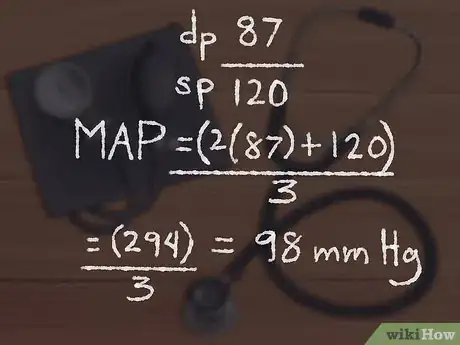
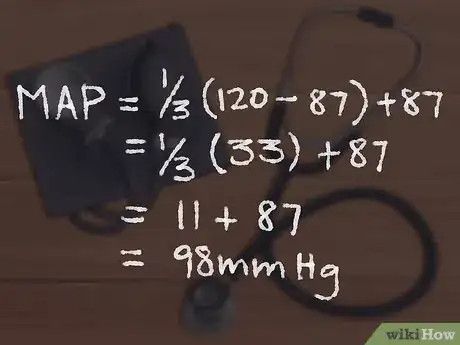
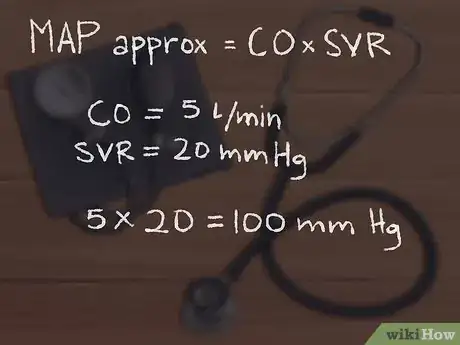

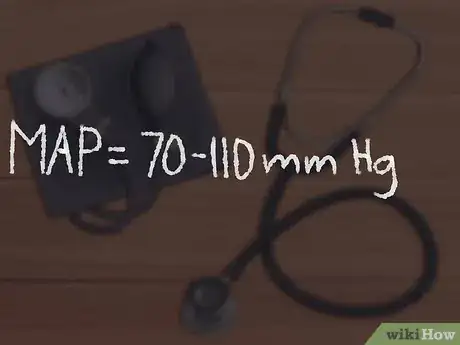








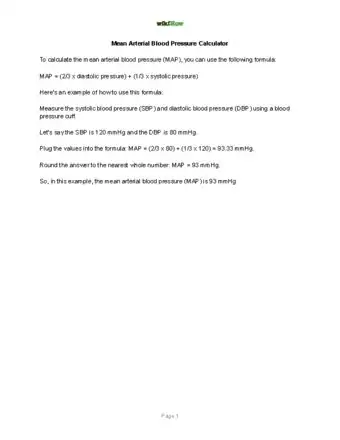
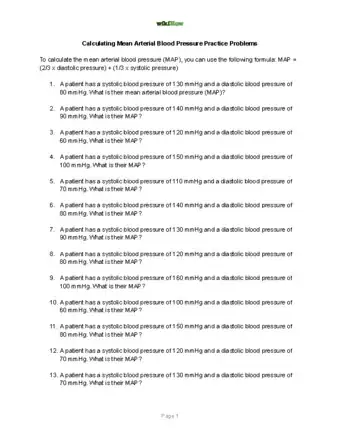
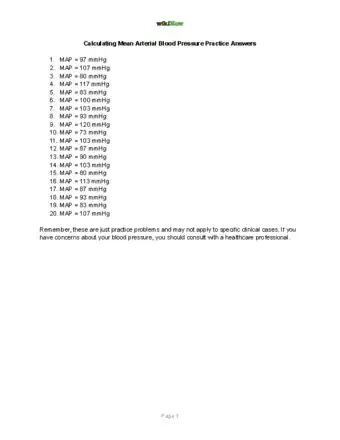




-Step-3-Version-3.webp)
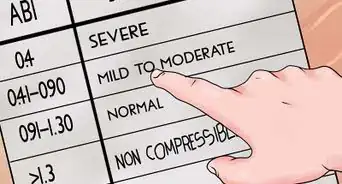














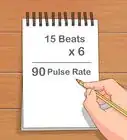





































Medical Disclaimer
The content of this article is not intended to be a substitute for professional medical advice, examination, diagnosis, or treatment. You should always contact your doctor or other qualified healthcare professional before starting, changing, or stopping any kind of health treatment.
Read More...